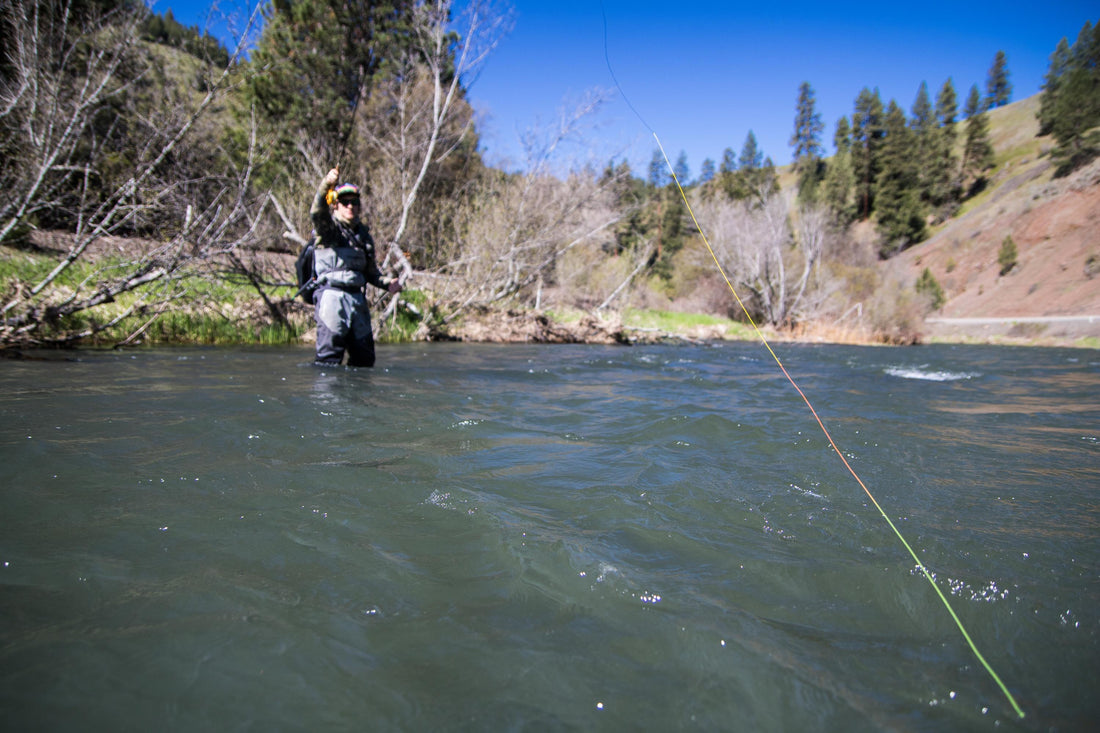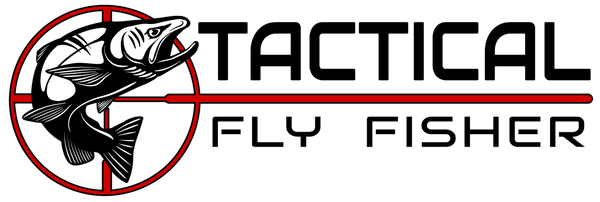
Rod length and reach: a trigonometry perspective
Share
I'm often asked about the pros and cons of longer and shorter rods for Euro-nymphing. There are plenty of points to consider for such a list but one of the main considerations is reach. The reason is simple, Euro-nymphing is a relatively short distance presentation technique and is often done to the side of a trout instead of downstream in the blind spot behind a trout's vision. This can lead to spooked trout from approaches that signal you are a danger to fish. There has been a lot written about a trout's cone of vision, the refraction of light entering the water, and how these variables combine to determine what trout see outside of the water. If you want a good discussion of the subject, see chapter 3 in Jason Randall's book Trout Sense.
The complications of physics and trout physiology aside, I don't know any anglers who run through the calculations of whether they are staying below a trout's cone of vision as they approach each new lie they fish. The simple fact of the matter is that if you can see a trout with a bit of clarity (or the bottom near where you think there is trout) then the trout you are pursuing can likely see you and will be spooked by your presence. So how do you affect your visible presence in relation to the trout? There are two ways: 1. Obtain a lower profile by crouching or kneeling. 2. Fish further away. The most successful anglers are adept at approaching fish while knowing how, when, and where to use these two strategies to reduce their visibility to the trout while still maintaining distances and angles that allow them to present their flies with effective drifts.
While it is pretty common to see competitive anglers fishing from their knees as they carefully work their beat, it's pretty uncommon to see anglers using this approach if you go visit a popular trout stream. For the everyday angler, it is more common to fish further away to try and stay invisible or less threatening to the fish. This isn't difficult when fishing an indicator nymphing rig because you can cast a few feet further, though the longer line increases the difficulty of maintaining a quality drift. When Euro-nymphing, I see many anglers approach holding lies too closely without first thinking how they can stay out of clear sight of the fish. One way they would be able to stay further away and maintain a quality drift is by fishing a longer rod, which is one of the reasons why you see most Euro-nymphing rods starting at 10' in length.
I've been contemplating the differences in reach between rods of different lengths for a while now. I've been fortunate to fish a lot of rods over the last year by a lot of different companies and I plan on doing reviews for at least three model lineups in the near future. I have noticed a difference in the reach I get by fishing longer rods but I wanted to quantify it somehow. As I visualized the problem, I realized that good old fashioned trigonometry could at least estimate the difference.
When you look at a profile of an angler Euro-nymphing, you can form two right triangles which share a side. The apex of these adjoined triangles is the tip of the rod. The hypotenuse of one triangle is formed by the leader and starts where the sighter contacts the water and ends at the rod tip. The hypotenuse of the other triangle is partially formed by the rod and extends in an imaginary line downward and rearward to the water's surface. The base of the triangle with the leader as the hypotenuse describes the reach beyond the rod tip. The angler ends up being about roughly 2/3 of the distance from the apex to the end of the base of the other triangle, though that distance changes based upon the angle the rod is held at. Therefore, the total reach is the sum of the base of one triangle plus about 2/3 of the adjoining triangle's base.
It is possible to calculate the lengths of the side of a right triangle by knowing the length of one of the sides and one of the angles. If you need a little brush up on the formulas for how this is done, give the youtube video below a quick watch.
I attempted to use this capability to do some rough calculations on the difference in reach between fly rods of different lengths when Euro-nymphing. While fishing the Green River with Glade Gunther last week I made drifts with a micro-thin leader specifically built to reduce sag and best approximate a "true" right triangle. Obviously the sag induced by thicker leaders would change the quasi symmetry of the right triangles and the veracity of the calculations, but the overall message would remain the same.
For the demonstration, I made drifts with the rod held at 30, 35, 40, and 45 degrees with reference to the water's edge as measured by a protractor app on my iPhone. Then we measured the distance from the water directly under the rod tip to where the sighter entered the water. This measurement is equal to the base B in the photo and is equal to the reach beyond the rod tip. Using these two measurements I ran some calculations based on how the reach would change as the lengths of the hypotenuses (C in the photo) change due to the length of the rod. You can see the results in the table below. I was using the Thomas and Thomas 11' 3" 3 weight in the calculations so these rows are bolded in the table while the rest of the rows were just done by calculation. I make no claims that the values are "true" values but only approximate. My aim is to give you an idea of the differences you can achieve between rod lengths but there are infinite variables based on your rig, height, drift style, wind, etc. etc. that will change the values and the reach you can achieve.


There are some interesting points to consider based on the calculations and others to consider when choosing a rod.
- As I said above, these calculations were done specifically with a micro thin leader to achieve the least sag and furthest reach. The numbers would change with thicker leader formulas but the reach benefit of longer rods would still persist.
- Depending upon the angle, an 11.5' rod (about as long as you can get for a Euro-nymph rod) gets about 3 to 4 feet of extra total reach (i.e. distance from the fish) over the standard 9' rod and about 2' of extra reach over a standard 10' Euro-nymph rod. These distances might not sound like much until you spook trout trying to take an extra step closer or fail to get your nymphs into the seam on the far bank or middle of the river because you couldn't wade close enough. Even inches can mean the difference between a successful cast and drift so any extra reach is significant.
- While you get more reach with longer rods there are obviously drawbacks also. Longer rods have more weight in the hand and react a bit slower to takes because greater inertia must be overcome. They also tend to exaggerate lateral deviations in the casting stroke which decreases accuracy. A further drawback is they become cumbersome in rivers with tight canopy and riparian vegetation. Personally I've been gravitating to longer rods as they've become lighter, more responsive, and more enjoyable to fish. Each angler needs to weight the pros and cons however as they make the decision on which rod and length to purchase.
- A shallower angle allows you more reach overall. However, this benefit is only realized if you raise your arm at the shoulder and extend your arm to maintain high elevation of the rod tip and extend the rod tip further out over the river. This is a common tip I work on with my clients. Many of them try to get reach by just elevating the rod tip while having their hand by their side. This actually pulls the rig back toward them and shortens their reach significantly. The best reach you can achieve is with a rod tip that is just above eye or head level with the shoulder raised and the arm extended.
And just so you don't think all we did was play with measurements, there was plenty of fishing done and fish caught.

Happy Fishing,
Devin
